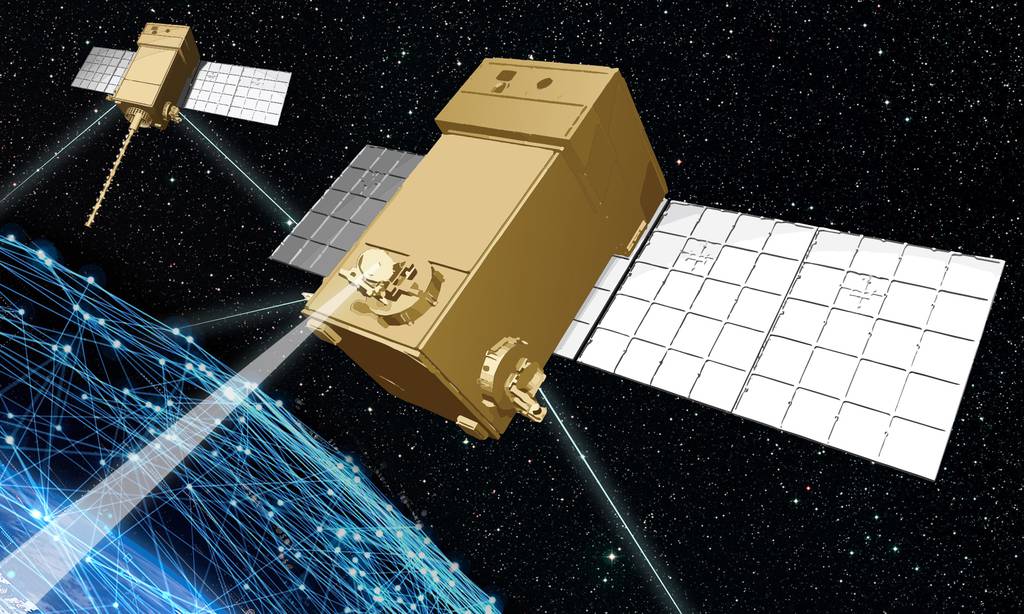WASHINGTON — Now that the Space Development Agency has selected four contractors to build its first 28 satellites, the organization is looking for a launch provider to ferry them into orbit.
According to a solicitation posted Oct. 6, the agency plans to select one company to provide launch services for all 28 satellites, with the first launch taking place in September 2022.
Those 28 satellites will comprise tranche 0 of SDA’s National Defense Space Architecture, a new proliferated constellation providing a whole host of services primarily from low Earth orbit. Among other things, the NDSA is anticipated to provide beyond-line-of-site targeting, hypersonic missile warning and tracking, and a space-based mesh network that will connect all of the services as part of the Pentagon’s new Combined Joint All-Domain Command and Control (CJADC2) approach.
The constellation will ultimately include hundreds of satellites, but SDA isn’t putting them all up at once. Rather, the agency has adopted a spiral development approach, where the most mature and ready technology is added to the constellation in two year tranches.
This launch solicitation covers the first tranche, otherwise known as tranche 0. Slated to go into orbit in fall 2022, tranche 0 is what SDA calls its “war fighter immersion tranche.”
“Its goal is to provide the data in a format that the war fighters are used to seeing on tactical timelines that they can be expected to see once we actually become operational,” SDA Director Derek Tournear told C4ISRNET. “The whole purpose of tranche 0 is to allow the war fighters to start to train and develop tactics, techniques and procedures so that they can create operational plans for a battle where they would actually incorporate these data.”
With just 28 satellites, tranche 0 will not provide global, persistent coverage. Instead, it will provide periodic, regional capabilities. Tranche 0 will feature the inaugural satellites in the transport and tracking layers. The 20 transport layer satellites will form the base of a space-based mesh network, passing data from satellites to weapon systems along a high-speed, on-orbit corridor. Tournear has previously stated that the transport layer will serve as the space component of CJADC2, the Pentagon’s effort to connect sensors to shooters across domains and services.
The inaugural tracking layer will be made up of eight satellites. The tracking layer will be used to detect and track hypersonic threats, working with the transport layer to pass tracking data and custody from satellite to satellite—collaborating to keep an eye on globe-traversing missiles that can evade current missile warning capabilities.
SDA has selected Lockheed Martin and York Space Systems to each build 10 of the transport layer satellites, while SpaceX and L3 Harris will split the eight tracking layer satellites.
Because the SDA has given vendors flexibility in the designs of their satellites, there is some variety to the weight of the space vehicles being launched into orbit. While all 20 transport layer satellites will weigh approximately 200 kilograms, give or take 20 kilograms, there is a significant difference in the size of the eight tracking layer satellites. One vendor—either SpaceX or L3 Harris—will be contributing four tracking layer space vehicles weighing approximately 1,068 kg each. The other vendor’s space vehicles will be significantly lighter at just 249 kg.
In total, SDA is looking to put as much as 10,164 kg of hardware into orbit. The agency wants all 28 satellites delivered to two circular, 950 km near-polar orbits, with the tranche divided evenly into two planes of 14 satellites. The launch provider has until March 31, 2023, to put all payloads on orbit and has discretion as to how many launches it will use to do that. The goal is to have as many satellites up as close to September 2022 as possible.
Proposals are due by Nov. 5 at 4 p.m. EST.
Nathan Strout covers space, unmanned and intelligence systems for C4ISRNET.








